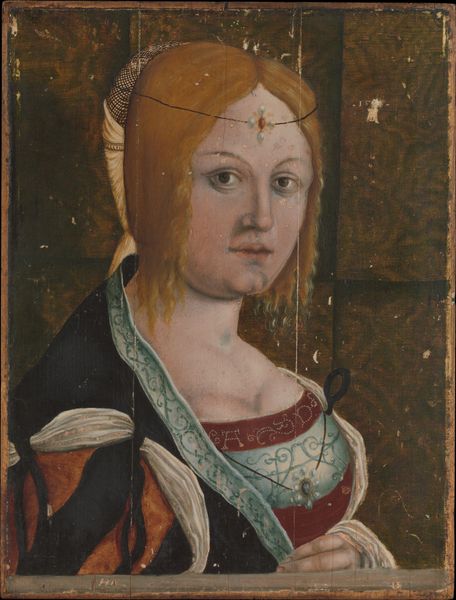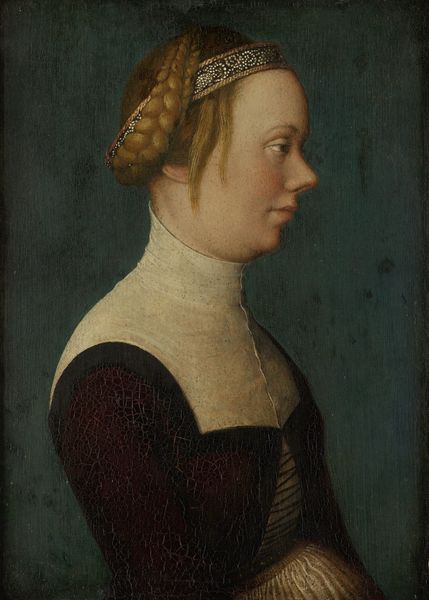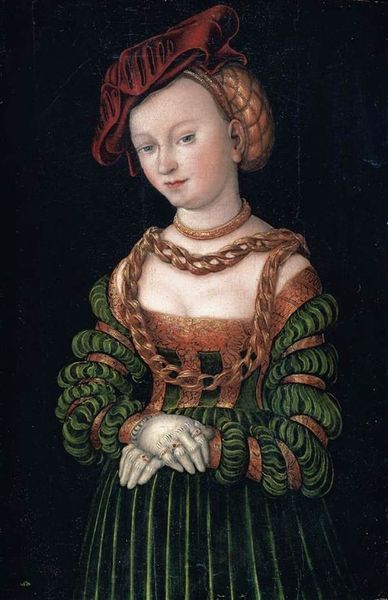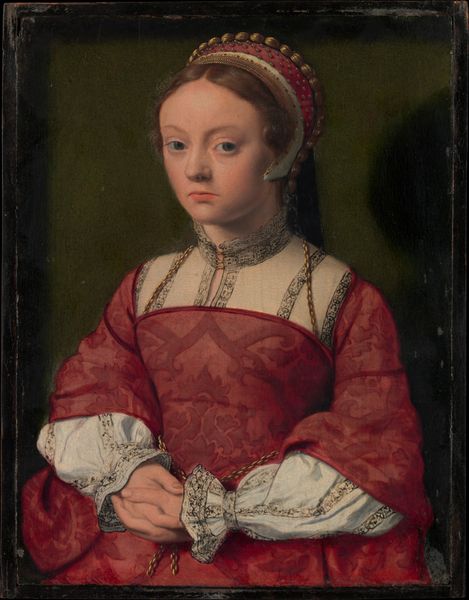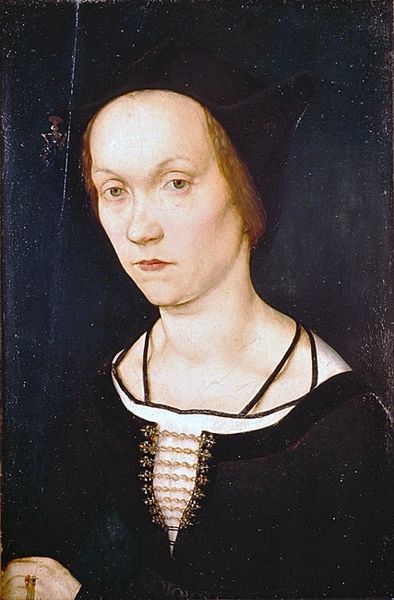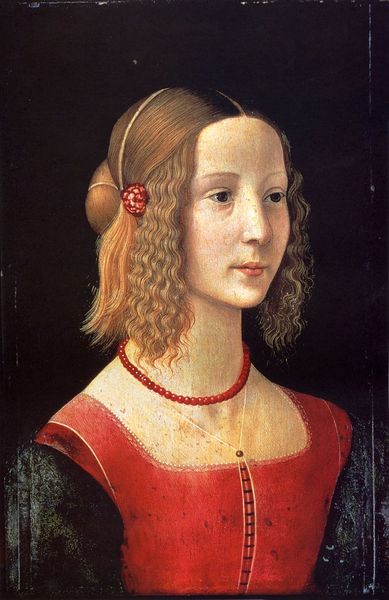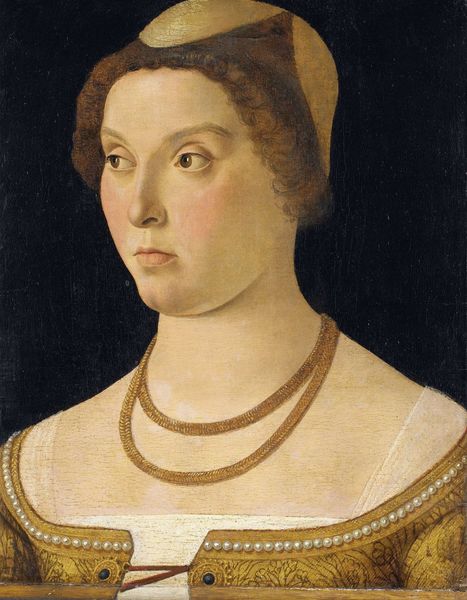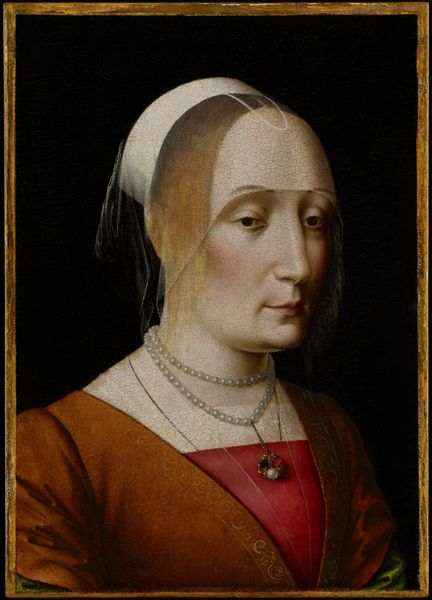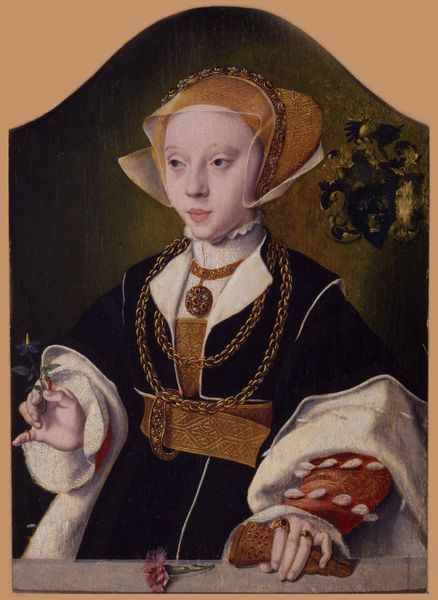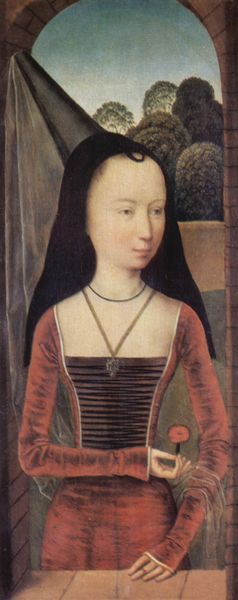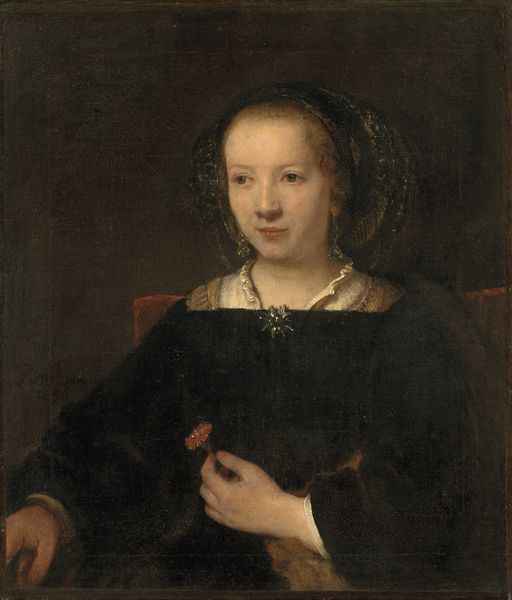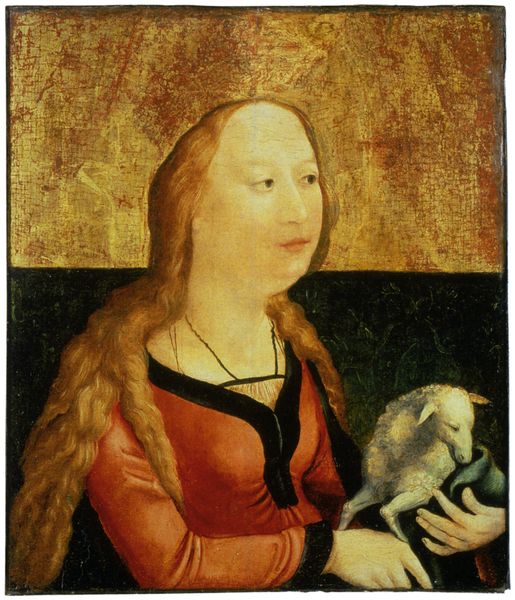
painting, oil-paint
#
portrait
#
self-portrait
#
painting
#
oil-paint
#
classical-realism
#
11_renaissance
#
history-painting
#
academic-art
#
italian-renaissance
Copyright: Public domain
Mabuse painted Queen Eleanor of Austria, likely in the 16th century, capturing her with an enigmatic gaze. The elaborate headwear, adorned with rich fabrics and intricate designs, signifies her noble status. The fur muff held delicately in her hands hints at both luxury and perhaps a need for comfort or warmth. The motif of the veiled or covered head resonates across cultures and epochs. From ancient Roman matrons to Renaissance nobility, it represents modesty, marital status, or religious devotion. The soft, almost melancholic expression on Eleanor’s face evokes a psychological depth, reminiscent of the Renaissance interest in humanism and inner emotional states. This gesture transcends time, appearing in countless portraits, each iteration subtly shifting its meaning. The image speaks to the cyclical nature of power and representation. Each age reinterprets and reimagines these symbols, blending collective memory with contemporary values. The enduring allure of portraiture lies in its ability to capture not just a likeness, but also the intangible essence of an individual and their place within the grand tapestry of history.
Comments
No comments
Be the first to comment and join the conversation on the ultimate creative platform.

